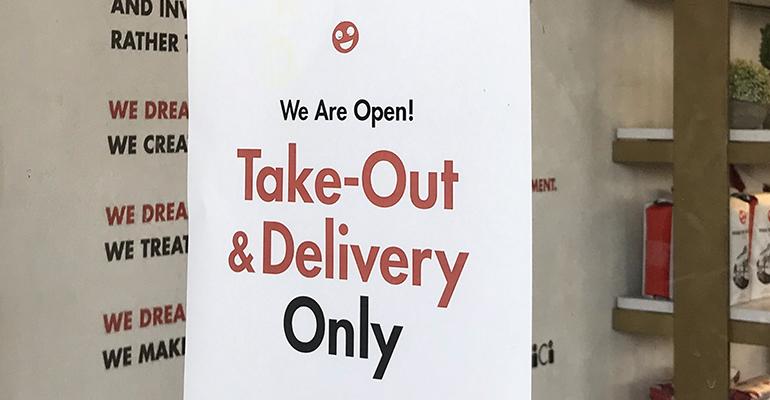There is no guidebook for communicating with customers during a time like this. The coronavirus pandemic has taken the industry by surprise, and the true effects on restaurants are as of yet unknown. But industry insiders have a few guiding principles—mainly look to the future and keep lines of communication going.
"What they can do is start recognizing that this is where great brands differentiate themselves," said Zach Goldstein, CEO and founder of Thanx, the loyalty and customer relations platform.
Whether a restaurant has pivoted to delivery only, or closed up completely "you can not cut the all important line of communication off with customers just because they're not coming into the store," Goldstein said.
Chipotle's comeback after a string of public health scares offers some guidance at a time like this, said Goldstein. The brand was able to win back trust by doubling down on their safety measures and quality of products and letting customers know all about it. He predicts customers will have general feelings of anxiety associated with restaurants that operators will have to contend with even after restrictions are lifted.
Krystle Mobayeni, CEO of Bento Box, a website builder for restaurants, thinks operators shouldn't be afraid to state the obvious regarding things like hand washing and sanitation. It might be just the push customers need to order takeout today, or to dine out again when they can.
"One thing to start thinking about is events and catering as things ramp back up," Mobayeni said. As offices reopen, teams will want to reconnect after working remotely. "Celebrations have been postponed." And welcoming back diners with catering and event options is a great way to drive business. When party planners do come back, think about offering increased flexibility with cancellations and postponements to ease customers' minds.
For now, as the situation is fluid and evolving daily, relay changes in policies to your customers in real-time, whether it's new delivery options or an employee relief fund.
Let customers know "you're not making sacrifices in treatment of employees and in quality of product," Goldstein said. "Consumers want to know when they come back, hopefully, they're coming back to the same brand they knew before."
And let customers know what your brand values are.
"Our first priority is to keep both safe and guests safe," Bo Peabody, restaurant owner and executive chairman and co-founder of Seated, an app that promotes dining out. "Our second priority is to make sure that we can support the livelihood of staff as long as we possibly can no matter what happens. Our third priority is to operate, in some capacity, for as long as we can with the guidelines being set by government."
Customers don't expect restaurants to solve this crisis, but they do want to know if they can plan to order their usual dinner to-go, and that the restaurants they support are aligned with their values.
"I do think restaurants have to be realistic about their long-term plan," Peabody said. "You've got to find the balance between safety playing your role in the food system and making sure you come back strong with your core staff and core product. You've got to be clear eyed about finding the point in the intersection."
Contact Gloria Dawson at [email protected]
Follow her on Twitter: @GloriaDawson
For our most up-to-date coverage, visit the coronavirus homepage.





